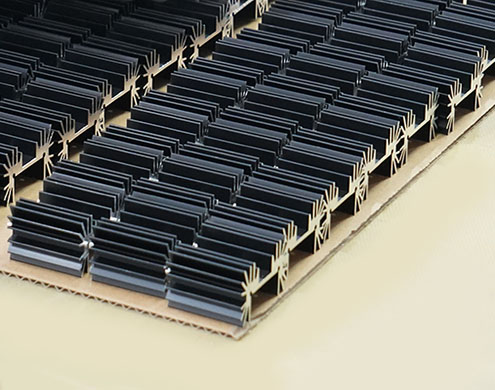What is a heat sinks and how is it made?

What is a heat sinks?
Heat sinks is a device that transfers heat from a heat source to a surrounding fluid medium, such as a car engine or a computer CPU, into air or liquid. Its purpose is to prevent overheating and ensure proper functioning of the device. Without a heat sinks, current flowing through the device encounters resistance and generates heat, causing the temperature to rise rapidly. Sustained high temperatures can damage the device, and extremely high temperatures can cause permanent damage. Despite its small size, the heat sink is an extremely important component, and its manufacturing methods vary.
The core working principles of a heat sink are heat conduction, convection, and radiation.
Conduction: Heat is transferred directly from a high-temperature heat source (such as a CPU) to the heat sink base, which is in close contact with it.
Convection: The heat sinks fins significantly increase the surface area in contact with the air. Air flows over these fins, removing heat through natural convection or forced fan movement.
Radiation: All objects radiate heat in the form of electromagnetic waves, and heat sinks also dissipate some heat this way.
Main Types and Applications. Electronic device heat sinks:
Most commonly found on computer CPUs and GPUs. Typically made of aluminum or copper, they feature fins and work with fans to form an active cooling system.
Automotive radiators: These are the core components of a vehicle's cooling system. Engine coolant flows through the heat sinks tiny pipes, dissipating heat into the air through fans and the vehicle's airflow.
Home radiators: Hot water from central heating or boilers circulates through them, heating the indoor air through convection and radiation.
How are heat sinks manufactured?
The manufacturing process for radiators varies depending on their type, material, and performance requirements. Below, we'll take the most common methods as examples to explain the main manufacturing processes. Extrusion is the most common method for producing aluminum radiators, offering a simple and cost-effective manufacturing process, particularly for those with uniform fin shapes.
The steps are as follows: First, a steel mold is manufactured based on the shape and number of fins. The aluminum alloy billet is heated to a partially melted state of approximately 480°C to 520°C and then forcefully pushed through it with a hydraulic piston to form the radiator profile designed for the die. The profile is then cooled on a cooling table to set the shape, then straightened. The profile is then cut to the required length to form individual fin groups. The base of the radiator undergoes precision machining such as milling and grinding, and is anodized or sprayed with black paint. Finally, the processed fin group is assembled with components such as heat pipes and fans to form a complete heat sinks product.




